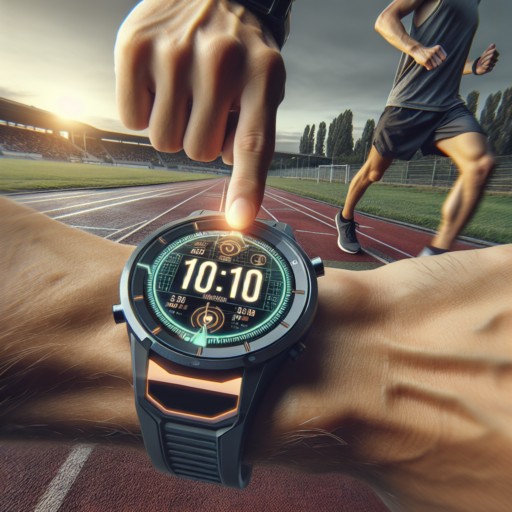No se han encontrado productos.
Why do I feel like I’m running faster on a treadmill?
Many runners experience a peculiar sensation when they transition from outdoor surfaces to a treadmill — a feeling of accelerated pace. This discrepancy often raises curiosity and questions about the mechanics and psychology behind treadmill running.
One reason behind this sensation is the controlled environment a treadmill offers. Unlike outdoor running, where the terrain and conditions vary, a treadmill provides a consistent surface. This uniformity means that your body doesn’t have to adapt to changes in incline or navigate obstacles, allowing for a potentially faster pace. The steady belt speed of a treadmill also encourages a constant pace, unlike outdoor running where your speed can fluctuate without you realizing it.
Another factor is the lack of forward motion when running on a treadmill. When you run outdoors, your body has to propel itself forward, overcoming air resistance and exerting energy to move through space. On a treadmill, however, the belt moves beneath you, and you don’t experience the same resistance or sense of movement. This can create a deceptive feeling of accelerated speed even if your pace is similar to or slower than your outdoor runs.
Is it accurate to run on a treadmill?
Running on a treadmill is often regarded as a reliable way to maintain fitness, especially when outdoor conditions are not ideal. However, questions about its accuracy in replicating outdoor running remain. Studies show that treadmill running can provide an effective workout but there are some aspects you should consider.
Firstly, the mechanical movement of a treadmill differs slightly from the dynamic environment of outdoor running. The belt’s propulsion assists in leg turnover, potentially altering your natural running gait. This has led to debates among fitness enthusiasts about the accuracy of workouts and the calibration of effort compared to running on solid ground. Adjusting the treadmill’s incline to 1% is a commonly recommended practice to better simulate outdoor running conditions.
Key Factors Affecting Treadmill Running Accuracy
- Calibration: Over time, the calibration of treadmills can drift, leading to discrepancies in speed and distance readings. Regular maintenance and calibration checks are essential for accuracy.
- Treadmill Type and Quality: The type and quality of the treadmill significantly influence how accurately it can simulate outdoor running. High-end models tend to offer more precise measurements and a more realistic running experience.
- User Input: The accuracy of data, such as distance and pace, can also depend on correctly inputting user information (weight, age, etc.) and using the machine consistently.
Ultimately, while running on a treadmill might not perfectly mirror every aspect of outdoor running, with the right adjustments and awareness, it can be an accurate and effective way to train. It’s crucial for runners to be informed about these factors and make necessary adjustments to their treadmill settings and training routines.
Do you run faster or slower on a treadmill?
The question of whether one runs faster or slower on a treadmill compared to outdoor running has intrigued both novice and seasoned runners alike. The mechanics of running on a treadmill versus the unpredictability of outdoor surfaces presents a unique set of variables that can influence speed.
One of the key factors to consider is the belt movement of the treadmill. Unlike outdoor running, where you propel your body forward and overcome air resistance, a treadmill’s moving belt can assist in leg turnover, potentially making it easier to maintain a faster pace with less effort. However, the lack of environmental resistance can also mean that running the same speed on a treadmill might feel easier than running that speed outdoors.
On the other hand, the psychological and physical aspects of running on a treadmill can affect one’s pace differently. Some runners find the static scenery and repetitive nature of treadmill running to be less motivating, which may lead to a slower pace due to decreased effort. Furthermore, the absence of natural terrain variations and environmental conditions can also impact running performance and perceived effort.
Why is my treadmill speed not accurate?
Experiencing discrepancies in treadmill speed can be puzzling and frustrating, especially when you are trying to follow a precise exercise regimen. The accuracy of treadmill speed is crucial for tracking progress, ensuring workout intensity, and preventing injuries. Several factors may contribute to the inaccuracy of treadmill speed, ranging from mechanical issues to calibration errors.
Calibration and Maintenance Issues
The most common reason behind an inaccurate treadmill speed lies in calibration and maintenance neglect. Over time, treadmills require recalibration to accurately display speed, distance, and other metrics. This misalignment can lead to a display reading that doesn’t match the actual pace at which you’re running or walking. Regular maintenance checks, including belt alignment, tension adjustments, and lubrication, are vital to keep the treadmill operating correctly and displaying accurate readings.
Wear and Tear of Components
Continuous use of treadmills subjects them to wear and tear that can affect their performance. The treadmill belt, motor, and even the deck can undergo changes that impact how speed is measured and conveyed. For instance, a stretched belt might move slower than indicated, or a worn-out motor might struggle to maintain consistent speeds, thereby affecting the accuracy of the reading.
In understanding the factors that contribute to treadmill speed inaccuracies, users can take proactive steps to maintain their equipment and ensure their workouts are as effective as intended. It’s also worth noting that high-quality treadmills with advanced calibration features tend to exhibit fewer issues with speed accuracy over time.



